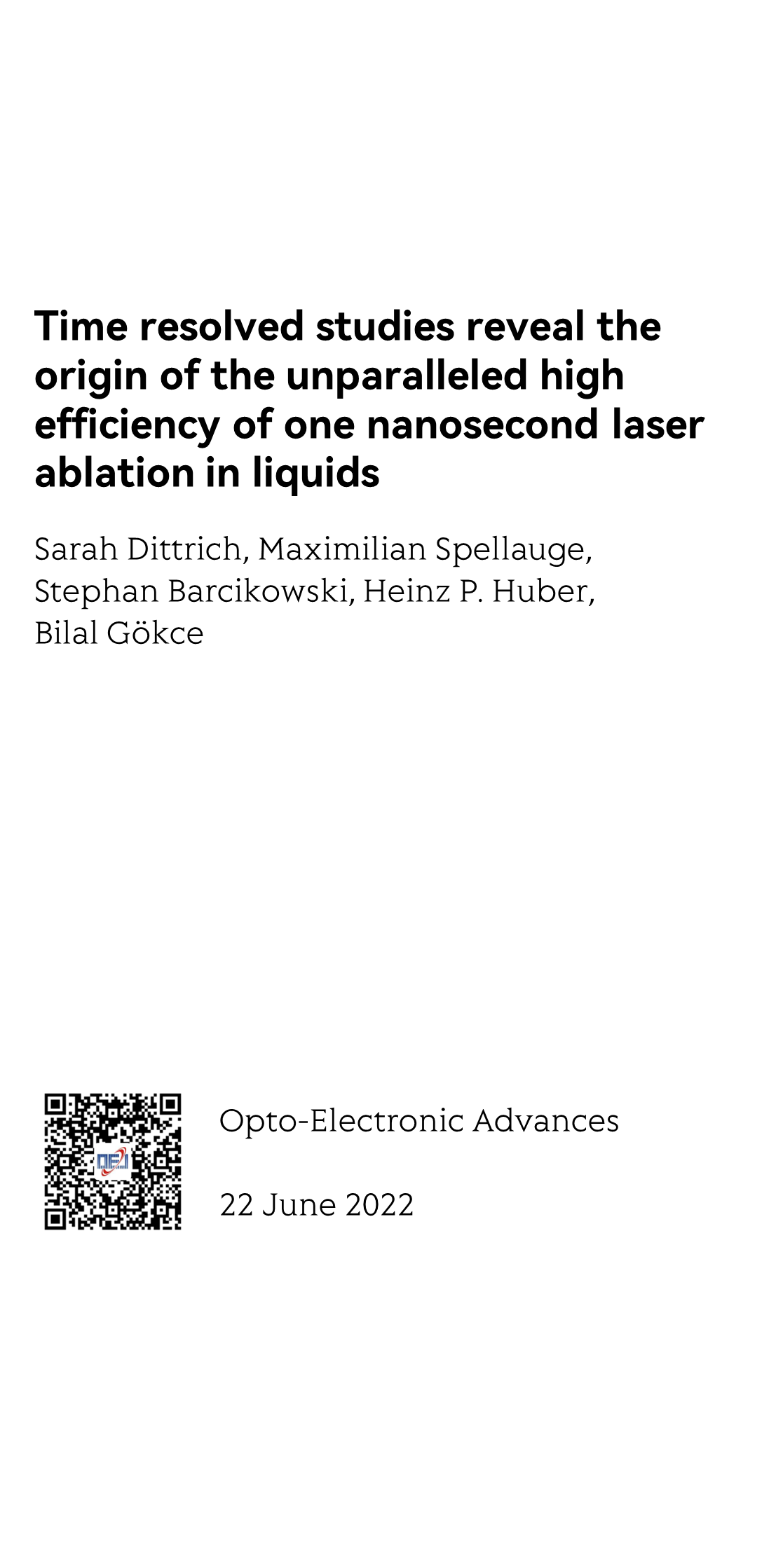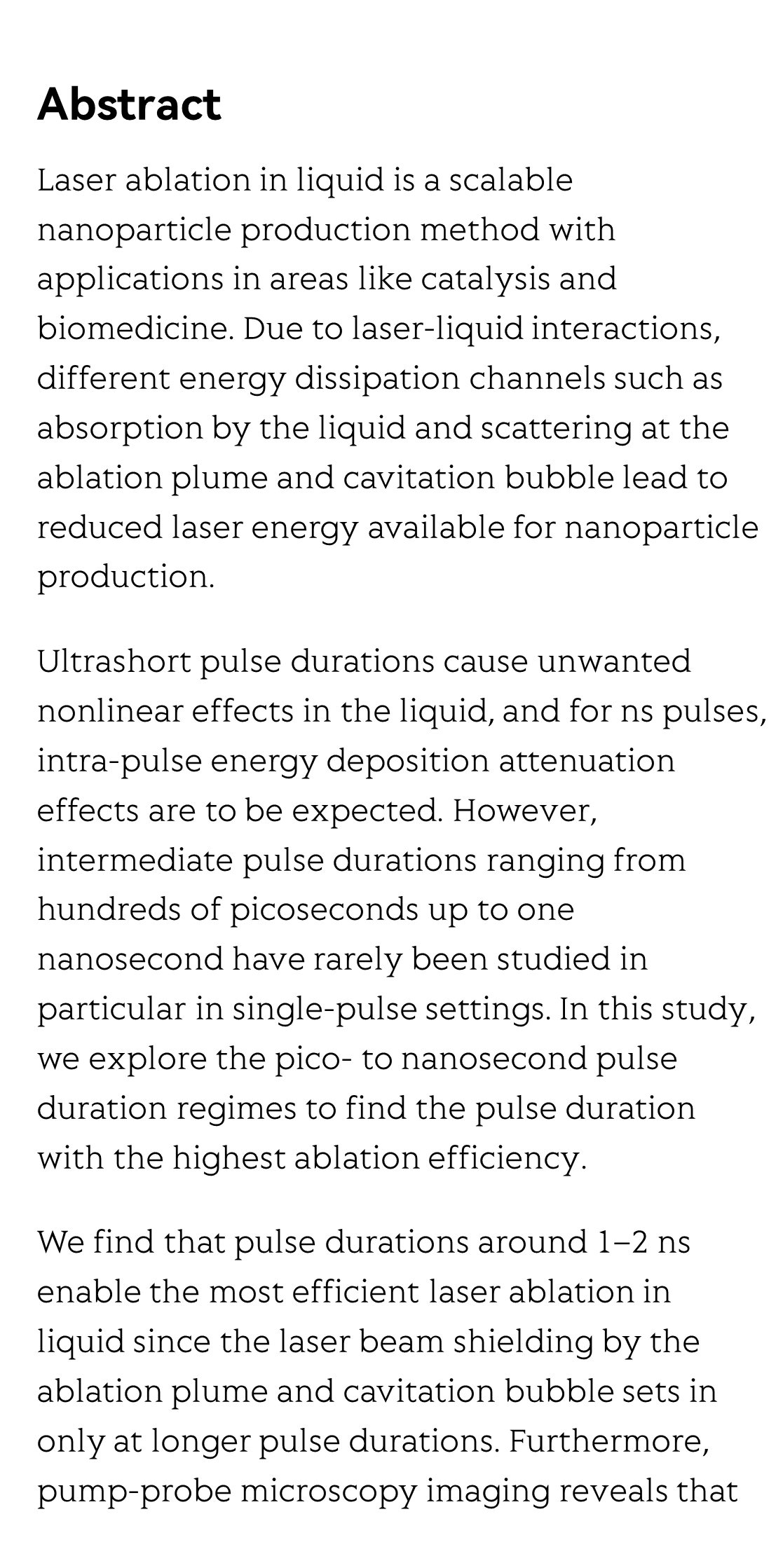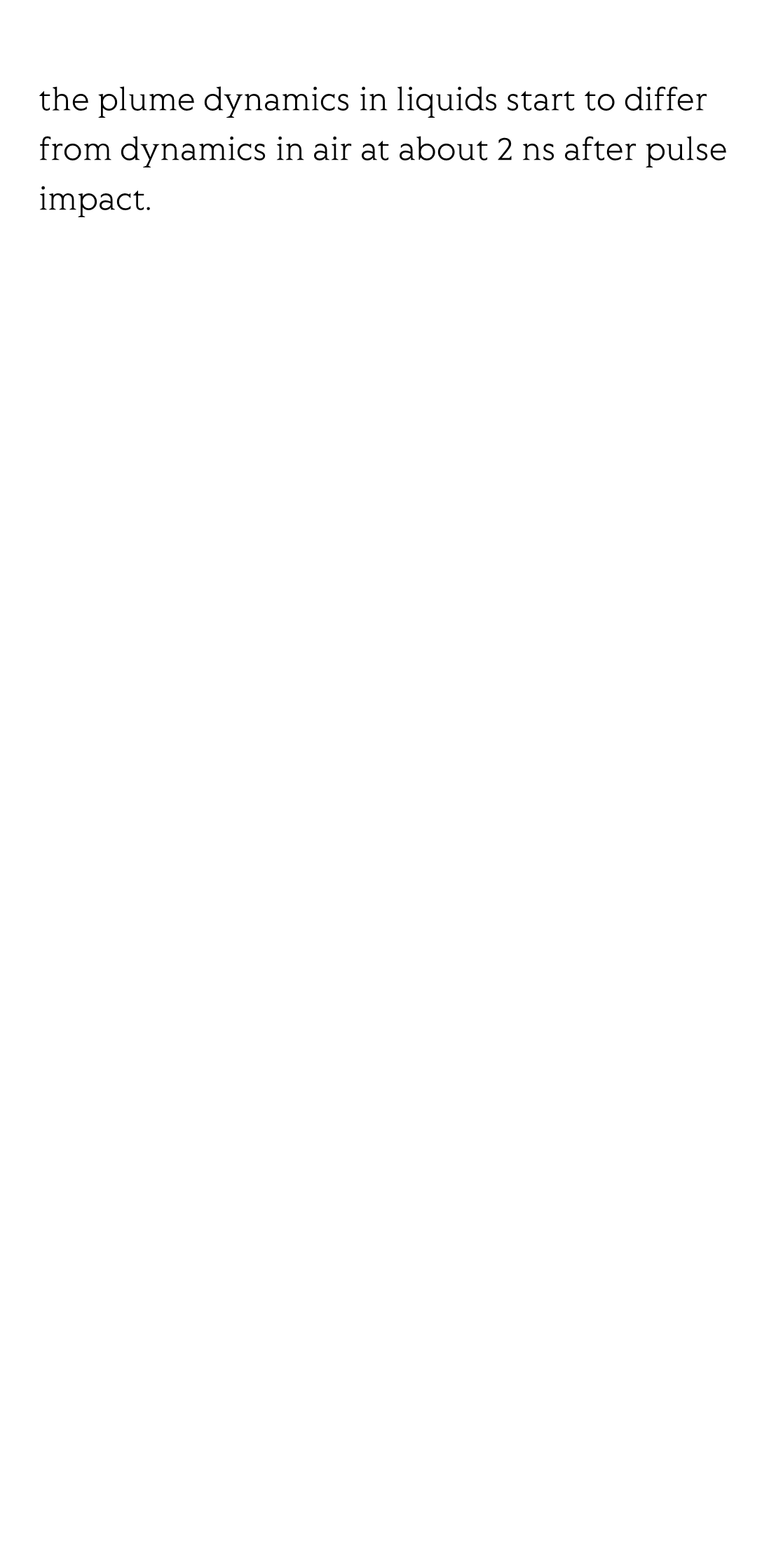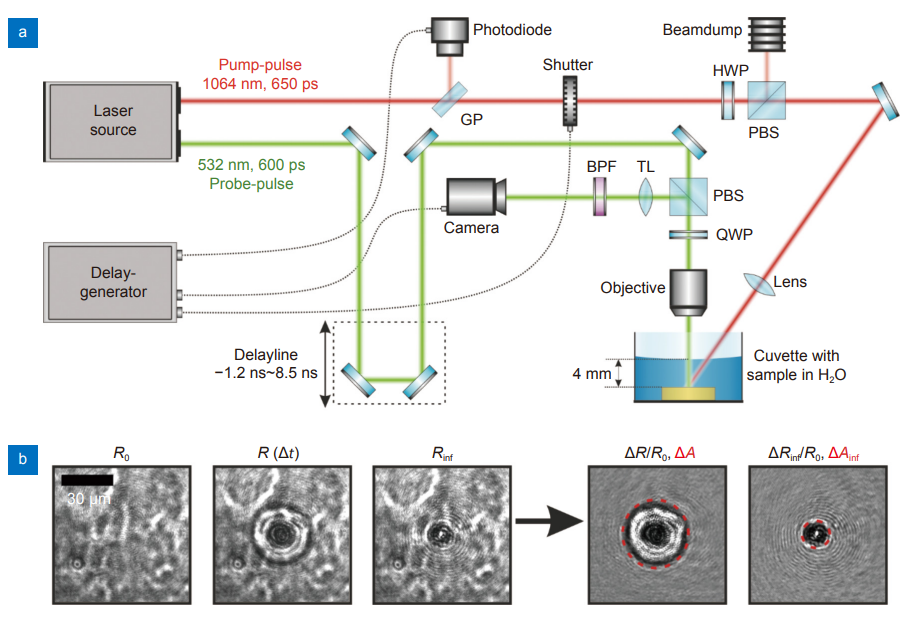Time resolved studies reveal the origin of the unparalleled high efficiency of one nanosecond laser ablation in liquids
时间分辨研究揭示了液体中一纳秒激光烧蚀无与伦比的高效率的起源
時間分解研究により、液体中での1ナノ秒のレーザーアブレーションの比類のない高効率の起源が明らかになりました
시간 분해 연구를 통해 액체에서 1나노초 레이저 절제의 비할 데 없는 고효율의 기원이 밝혀졌습니다
Los estudios de resolución temporal revelan el origen de la alta eficiencia sin precedentes de la ablación láser de un nanosegundo en líquidos
Des études résolues dans le temps révèlent l'origine de la haute efficacité inégalée de l'ablation laser d'une nanoseconde dans les liquides
Исследования с временным разрешением раскрывают происхождение беспрецедентно высокой эффективности однонаносекундной лазерной абляции в жидкостях
時間分解研究により、液体中での1ナノ秒のレーザーアブレーションの比類のない高効率の起源が明らかになりました
시간 분해 연구를 통해 액체에서 1나노초 레이저 절제의 비할 데 없는 고효율의 기원이 밝혀졌습니다
Los estudios de resolución temporal revelan el origen de la alta eficiencia sin precedentes de la ablación láser de un nanosegundo en líquidos
Des études résolues dans le temps révèlent l'origine de la haute efficacité inégalée de l'ablation laser d'une nanoseconde dans les liquides
Исследования с временным разрешением раскрывают происхождение беспрецедентно высокой эффективности однонаносекундной лазерной абляции в жидкостях




Reviews and Discussions
